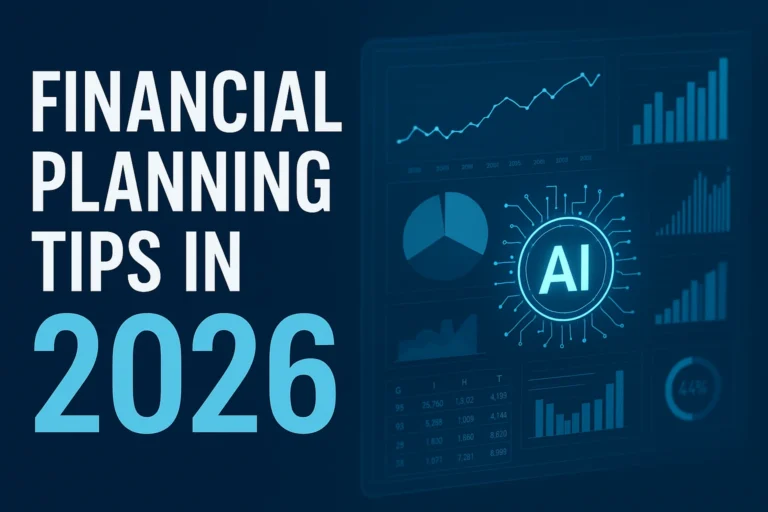Financial planning tips in 2026 has taken on new dimensions. With the global economy adapting to post-pandemic shifts, rising interest rates, and the increasing integration of AI-driven financial tools, individuals and families need fresh strategies to secure their future. Whether you’re saving for retirement, managing debt, or preparing for major purchases, staying informed about today’s financial landscape is critical.
This article provides actionable, updated financial planning tips in 2026, designed to help you make smart decisions that align with both personal goals and broader economic realities.
Revisit Your 2026 Budget Structure
- Why it matters: Inflation, shifting job markets, and digital subscription overload are changing spending habits.
- What to do:
- Adopt zero-based budgeting (assign every dollar a purpose).
- Use AI-powered budgeting apps (like YNAB, Monarch, or PocketGuard) for real-time tracking.
- Regularly review recurring expenses (streaming, fitness, cloud services) that quietly eat away at income.
Pro Tip: Set quarterly budget reviews instead of annual ones 2026’s economy is too dynamic to stick with a “set it and forget it” plan.
READ MORE: Top Budgeting Apps in 2026
Build a Stronger Emergency Fund
- 2026 trend: Rising costs of healthcare and housing mean the old 3-month rule isn’t enough.
- Updated rule: Aim for 6-9 months of expenses in a high-yield savings account (HYSA).
- Tools: Many banks now offer AI alerts that estimate how long your savings would last in case of job loss use these for motivation.
Diversify Investments Beyond Stocks
2026 is seeing stronger interest in alternative investments.
- Options to explore:
- ETFs & Index Funds: Still foundational for long-term growth.
- Green Bonds & Renewable Energy Funds: Growing thanks to government incentives.
- Real Estate Crowdfunding: More accessible with new platforms offering fractional ownership.
- AI/Tech Startups: Riskier, but high potential for early investors.
Key Reminder: Don’t chase hype. Stick to your risk tolerance and time horizon.
READ MORE: Investing Basics for Long-Term Success
Embrace AI-Driven Financial Tools
Artificial intelligence is shaping financial planning in 2026.
- Examples:
- AI wealth advisors that optimize asset allocation.
- Automated debt repayment tools.
- Predictive analytics that flag unusual spending or fraud.
- Benefit: Cuts down human error and speeds up decision-making.
Update Your Retirement Strategy
- New 2026 reality: People are working longer due to extended lifespans.
- Action steps:
- Increase contributions to 401(k), IRA, or RRSP (depending on country).
- Explore health savings accounts (HSAs) to offset future medical expenses.
- Consider semi-retirement planning blending part-time work with investments.
Plan for Big Purchases Strategically
Whether it’s a car, house, or higher education:
- Use price trend trackers to identify the best time to buy.
- For housing, monitor interest rate predictions closely in 2026.
- For education, research new income-share agreements or alternative funding.
Don’t Neglect Insurance and Risk Management
- Health insurance: Review annually plans evolve quickly.
- Life insurance: Ensure coverage matches your lifestyle changes.
- Cyber insurance: With rising digital fraud in 2026, this has become a must for families and entrepreneurs.
Stay Tax-Smart in 2026
- Leverage AI-powered tax prep tools that maximize deductions.
- Track crypto or digital asset gains tax authorities are more aggressive in 2026.
- If self-employed, take advantage of updated business expense write-offs.
Protect Against AI-Powered Scams
2026 has seen a surge in AI-generated phishing and fraud attempts.
- Defense tips:
- Enable multi-factor authentication.
- Regularly review credit reports.
- Use identity protection services that flag unusual activity.
READ MORE: How to Protect Yourself from AI-Driven Phishing in 2026
Keep Learning and Adapting
Financial literacy is an ongoing process. Subscribe to newsletters, listen to finance podcasts, and follow reputable advisors. The landscape shifts rapidly, and what worked in 2024 may not apply in 2026.
Conclusion
Financial planning in 2026 is not just about saving it’s about strategic adaptation. From leveraging AI tools to diversifying investments and protecting against modern risks, the smartest approach is proactive, flexible, and informed.
By applying these financial planning tips for 2026, you’ll position yourself for stability today and resilience tomorrow.

